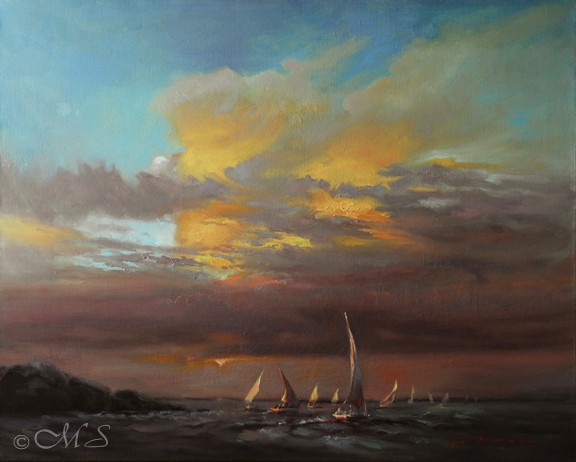Just about the time I think that I have seen and used all the natural pigments to come along in the past 10,000 years or so, another new one pops up, at least it pops up new to me. Maybe I just overlooked this one, but it does seem that this pigment has not been around until recently. It is a lovely subtle blue called Maya Blue, an extraordinarily stable pigment made of clay and an organic blue dye. Many of the companies that specialize in natural pigments carry it now.
Just like Mummy Brown, a pigment made from pulverized mummies (not completely proven), Maya Blue has a shady past also. Scientists have now hypothesized that this natural blue pigment was used in (mostly male) human sacrifices. These unfortunate fellows were painted blue then tossed down the well which was really a natural sinkhole as part of a ritual during this era, 290 to 900 CE. A 14 foot thick layer of blue mud was discovered at the Pre-Columbian Maya site called Sacred Cenote at Chichen Itza. Scientists think this thick layer accumulated after many centuries of religious events after many poor souls gave their lives to this practice.
The Beautiful Hues of Maya Blue

Center – Maya blue mixed with linseed
Right – pure pigment
click to enlarge
You can see this blue pigment in its purest form is very densely dark, but when mixed with white it turns a splendid subtle cool blue. I love using it because it is so understated and is not overpowering or garish in any way.
If mixed with red earths or madder, the color turns a delicate violet. When mixed with yellow ochre, soft green tones can be achieved. This is a good solution to the problematic lack of good natural greens on the purist’s palette.

Maya blue used in lower foreground section of water
In my painting, Going Home, Maya Blue was used liberally in the water in the foreground area. I wanted the dramatic and colorful focal area of the clouds and sky to be the dominant section. Hence, the subtle Maya blue was a perfect choice.
In addition to the sacrifices, the Ancient Mayans used this pigment for many other things such as decorating palace walls, codices, and pottery. Today, it is used to dye denim and is becoming popular for artist use. This heretofore unknown natural pigment will remain in my paint box and become a staple for many other applications in the years to come.
Kenneth Chang, New York Times

Very interesting. The Maya blue almost looks like the two walls I painted in my bedroom, which you and Dave both commented on the first time you were our guests. I know my paint can says Slate blue but I am now renaming it, Maya Blue. I love the history behind the color. Keep the blogs coming as I find the info you pass on is do interesting.
Well I must say, I love that I am influencing the paint companies. I do remember that beautiful blue in your bedroom. I agree, Maya blue is a much more suitable name.
Margret,
Lovely color, lovely painting.
Are you paintings for sale?
Best,
Burtgon
Yes, indeed, the paintings are for sale. Please contact me through my web site. Thank you for your inquiry. Margret